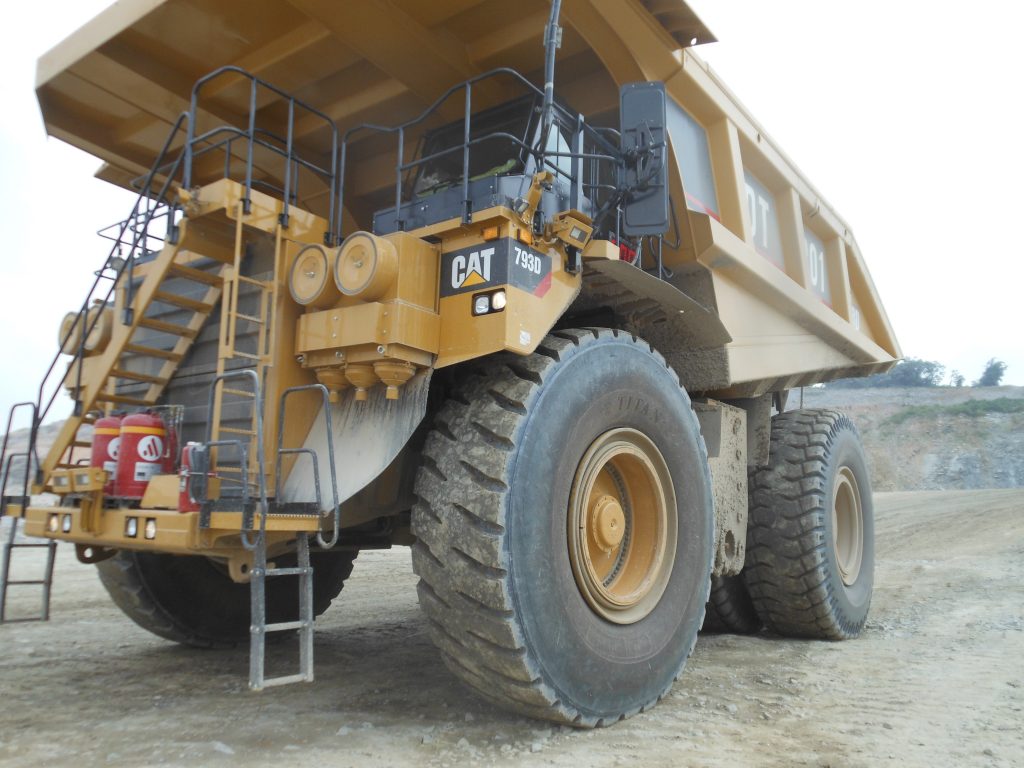Inspection Strategy:
Haul truck inspections on the frame should be developed to detect cracks at an early stage, so that it can be implemented to minimize the risk of catastrophic failure during operations, as part of a comprehensive risk management program. The frequency of inspection would vary accordingly to service hours, etc.
Managing Fatigue Cracking on Haul Trucks
Global’s ACFM program can reduce unnecessary downtime due to fatigue cracking on haul trucks and how it can complement any Reliability Centered Maintenance Program.

Typically, maintenance personnel utilize a preventative maintenance plan which consists of three service levels at varying intervals, with varying maintenance tasks performed at each service level. During this scheduled downtime, the haul trucks undergo routine maintenance procedures, such as engine and transmission oil changes. A visual inspection is also made to detect any new cracks, which on any given inspection can number 5 – 10 per haul truck. Of those cracks, between 1 – 3 are generally identified as critical, but will not undergo repairs at this time due to maintenance bay scheduling constraints.
Once a crack has been identified on a haul truck, the maintenance team is currently limited to one of two available options; unscheduled downtime or visual inspection. Each of these options are not only exceedingly expensive, but are often inadequate in their ability to accurately predict critical failure. In addition, each of the above options reduces the mechanical availability of the haul truck.
The solution is to implement a pre-inspection routine concentrating on the critical areas of the truck frame. Using electromagnetic techniques, a pre-inspection can identify and size any fatigue cracking in a very short period of time. Using this method allows planners to schedule the appropriate maintenance personnel to repair critical fatigue cracking during the planned maintenance shutdown.
The prospect of monitoring cracks electronically, without the need for constant visual inspections, was of great value to the preventive maintenance team.

Phased Array Ball Stud Inspection for a CAT 793 Haul Truck
Benefit
Phased array ultrasonic inspection enables us to quickly and effectively scan ball studs for discontinuities.
Phased array allows us to use one probe configuration for a complete inspection of the areas of interest in the ball stud. Multiple elements steer focus and scan beams set to a wide range of angles, so the changing of angled wedges is unnecessary. Because of the probes small footprint and operation of phased array, the limited scanning surface doesn’t pose a problem for inspection.
In-house testing has proven that our inspection method is effective at locating discontinuities in the threaded and tapered volume of the ball stud.
With inspections taking around one minute per component, our team of experienced technicians, equipped with leading edge technologies and inspection tools, perform fast and efficient inspections whether it be in the shop or on site.

Principle
Ball stud inspection using conventional UT methods is inefficient by today’s standards. Single-angle scanning has limited detection and sizing capabilities for misoriented defects. Inspection becomes more difficult if the component has a large thickness, complex geometry, and limited scanning access.
Multiple scans need to be performed using different wedges to inspect the areas of interest and interpretation of this data can be difficult. All of this can waste time and money.


